Edward Babiarz dips his hand into a 10-gallon bucket filled with a bright-red slurry. It is almost comforting to watch the texture move as his hand becomes the agitator. He cups a small handful of what looks like liquid but with a squeeze of his fingers against his palm it transforms, and he hands me soft, tepid and malleable pulp. This is the moment his art takes shape.

Edward Babiarz, pictured at his home in Berks County, found his artistic calling after attending an exhibition at Franklin & Marshall College. His self-curated display, The Paper Trail, runs through April at the Yocum Institute for Arts Education’s Holleran Gallery in Reading.
“There’s always been a creative component to my life that I felt I needed to get out,” says Edward, who initially thought his artistic release would come through the piano. An early stint in broadcast journalism provided a creative spark, but even though he loved his time behind the mic at WBQW in Scranton and programming for WKRZ out of Wilkes-Barre, he had to find something else. In the ’90s, Edward was living in Elizabethtown, working as a care-management professional, when he found his true artistic calling. He attended a showing by paper artist, Jeanne Petrosky, at Franklin & Marshall College and had an immediate connection with the work. “I was captivated.”
The two chatted and soon Edward was attending her workshops on papermaking; he then began renting an area in her studio until his art outgrew the space. He then created a workspace in his current home just outside of Reading. (Edward and Jeanne became lifelong friends and he even attended her wedding to Dennis Guzenski, a faux-finish artist, with whom she collaborates to create, per artfulhome.com, “things you don’t need, but that deep down, your soul requires.”)
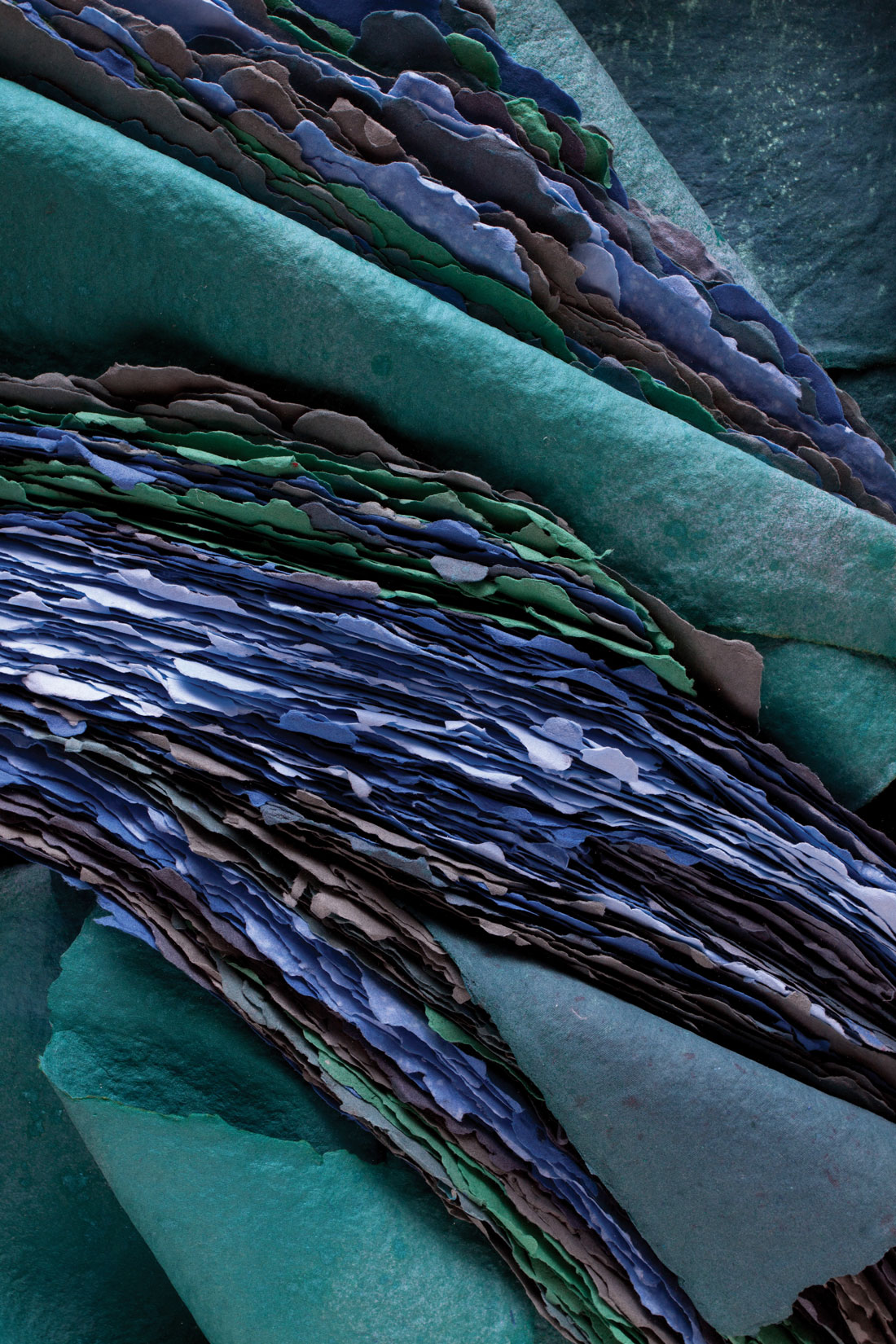
A detailed look at Irene, inspired by the artist’s vibrant aunt, shows vivid hues of blue paper carefully arranged.
Edward officially started displaying his artwork in 2001 “and from there it just built,” he says. “It was a natural progression, and I didn’t feel forced to succeed.”
Well, succeeded he has. In his element in his kitchen, with plates of pastries laid out on the counter and Cuban coffee brewing, it is easy for Edward to talk about his art. His art is his voice, a reflection of his thoughts and emotions and after we chat for a bit, he leads me downstairs to his studio/office where I can observe the process and reflect on several of his pieces still in his possession.
The Process
“I began holistically making paper,” explains Edward, who limited himself to 12” x 14” sized pieces in the beginning. He worked himself into a confident comfort level and the pieces got bigger. The process starts with a raw sheet of 100% first-cut cotton linter. When cotton is processed for clothing and traditional uses, the long fibers are separated from the cotton seed; the seed is then put through a “linter” to remove the fibers remaining inside and these become a medium for papermakers.
Edward shreds this sheet by hand into a 5-gallon bucket filled with water and then uses an industrial mixer to create a pulp or slurry. To produce the color, he adds a time-tested and proprietary blend of colorized pigments designed to penetrate the fibers of the pulp. Once the desired color is achieved, he retrieves a bit of pulp from the bucket and places it into a mould and deckle used to press the paper into form. “I create my medium; I feel like I have a personal attachment to my art because I know what it is like to make the paper, to mix, to know the right consistency, agitate and produce something that has integrity and strength,” he remarks.
After pressing, the individual sheets are allowed to dry. No two pieces of paper are the same; each piece has two sides, giving Edward something to consider even before assembly of the pieces as a whole. When the paper is ready to become part of the grand creation, it is lightly misted and manipulated by hand with assistance from any number of objects to provide the depth and motion Edward desires. Finishing sculpting is done with a simple plastic knife. Once complete, larger works can take more than a month – sometimes almost two months – to dry.
“The paper will dictate sometimes exactly what happens to it. Initially, paper is just flat; it’s lifeless. There’s nothing really to the paper at first and I want to transform it into something that has movement, life and energy. Sometimes a piece provides a different meaning for people depending on how they see things,” explains Edward. He seals each of his creations with natural methyl cellulose, an emulsifying and suspending agent, making it impervious to threats like insects and humidity.
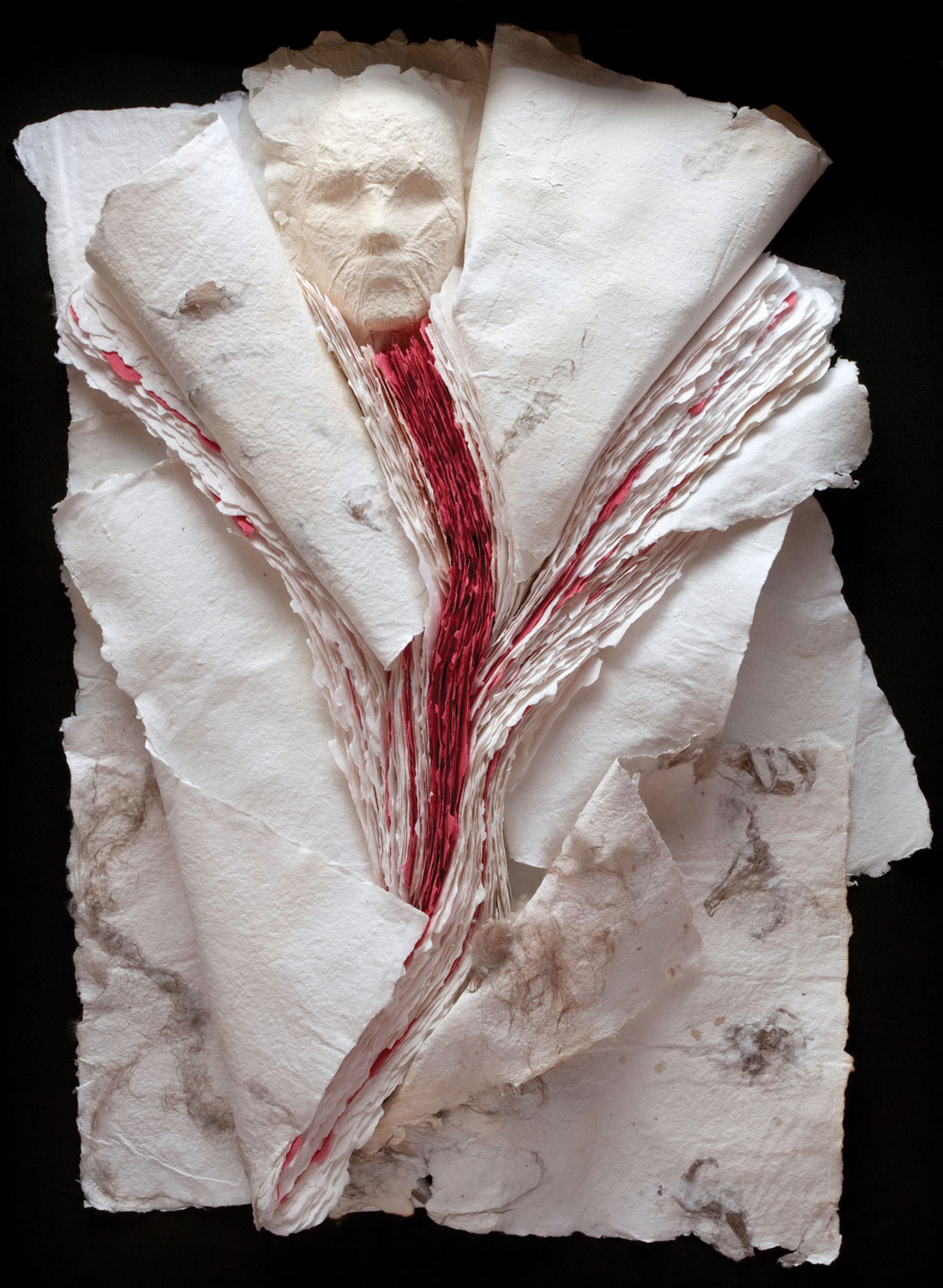
Resurrection of My Demon Brother stirs the emotions of many viewers. Edward says sometimes art is cheaper than therapy.
Pieces like Resurrection of My Demon Brother are “cheaper than therapy,” he admits, while describing the artistic process of the piece hanging in his office. The main focus of the work is a papered-over mask with a white form thrusting forth with pages of individual paper striped through the middle with shades of crimson red – “energy that is pushing out,” he explains. The piece incorporates alpaca hair embossed onto the paper. “This piece was shown in Ohio and Canada, and it has gotten some interesting reactions,” he notes.
Exhibits
“My work has been in a number of shows in Lancaster County, and I’ve been honored by the Lancaster County Art Association; they are just fantastic people,” says Edward, whose first appearance in an Association exhibition came in 2006. He has been recognized worldwide for his art, gaining the most notoriety with Canadian curators and collectors. In 2022, he was elected an associate member of The Plastic Club in Philadelphia, a volunteer-run nonprofit started in 1897 to promote the malleable and changing nature of art and to support artists working in every medium – including paper.
Now through April 30, Edward offers his artwork in an exhibition benefiting the Yocum Institute for Arts Education and Co-County Wellness Services. Titled The Paper Trail, the self-curated collection of more than 25 works is on display at Yocum’s Holleran Gallery. A few of the pieces included are Origin, Luminescence 1 and Intersectionality. Shows like The Paper Trail provide one of the best ways to experience Edward’s art. “I’m not a marketer. I don’t self-promote. I don’t even have a website, which I probably should,” admits Edward. “I put my voice on paper.”
The Holleran Gallery is located at 3000 Penn Avenue in West Lawn, Berks County. Hours for the exhibit are Monday through Friday, 9 a.m.-8 p.m., and Saturday, 9 a.m.-1 p.m. Visit yocuminstitute.org for more information.
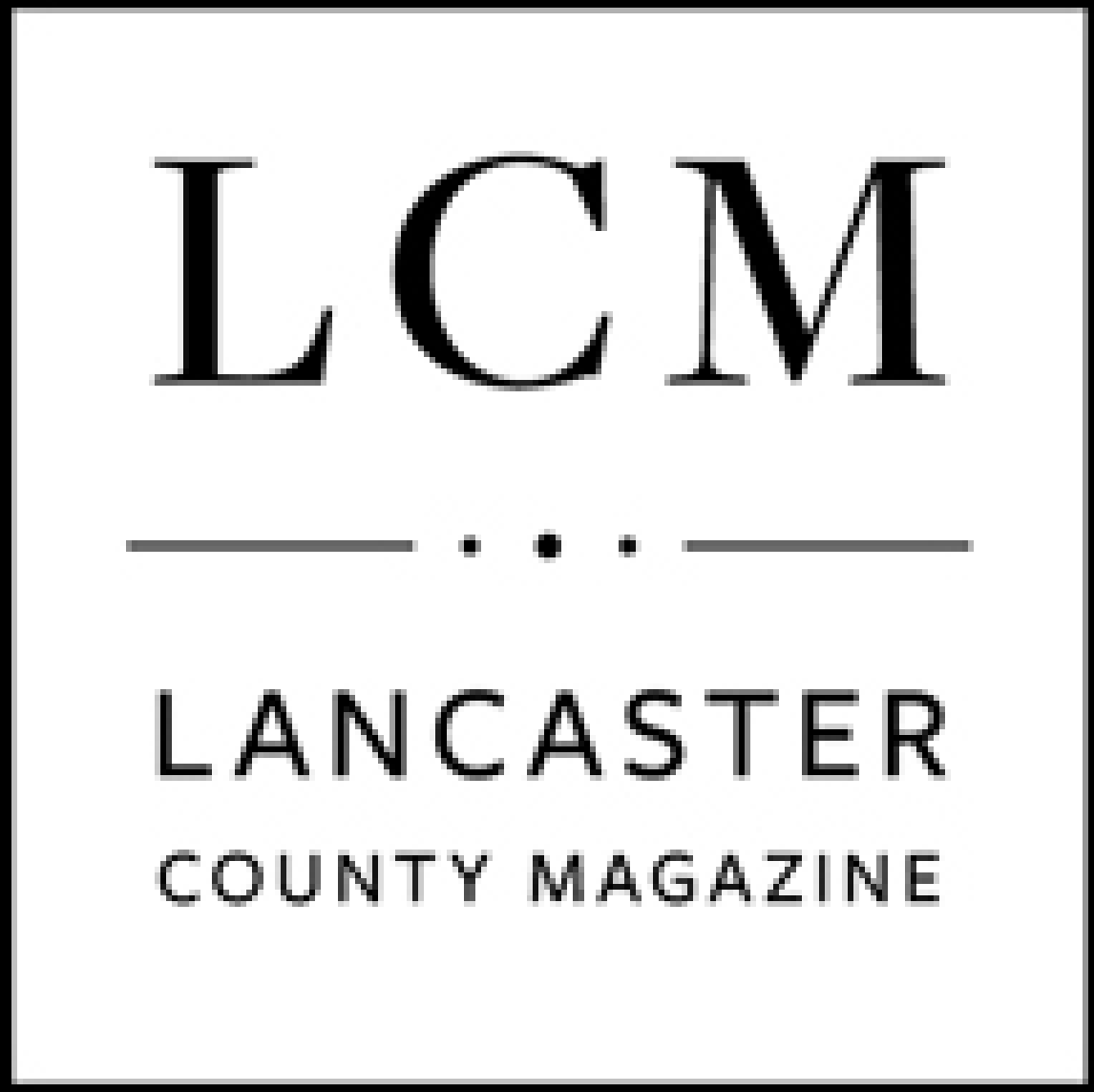
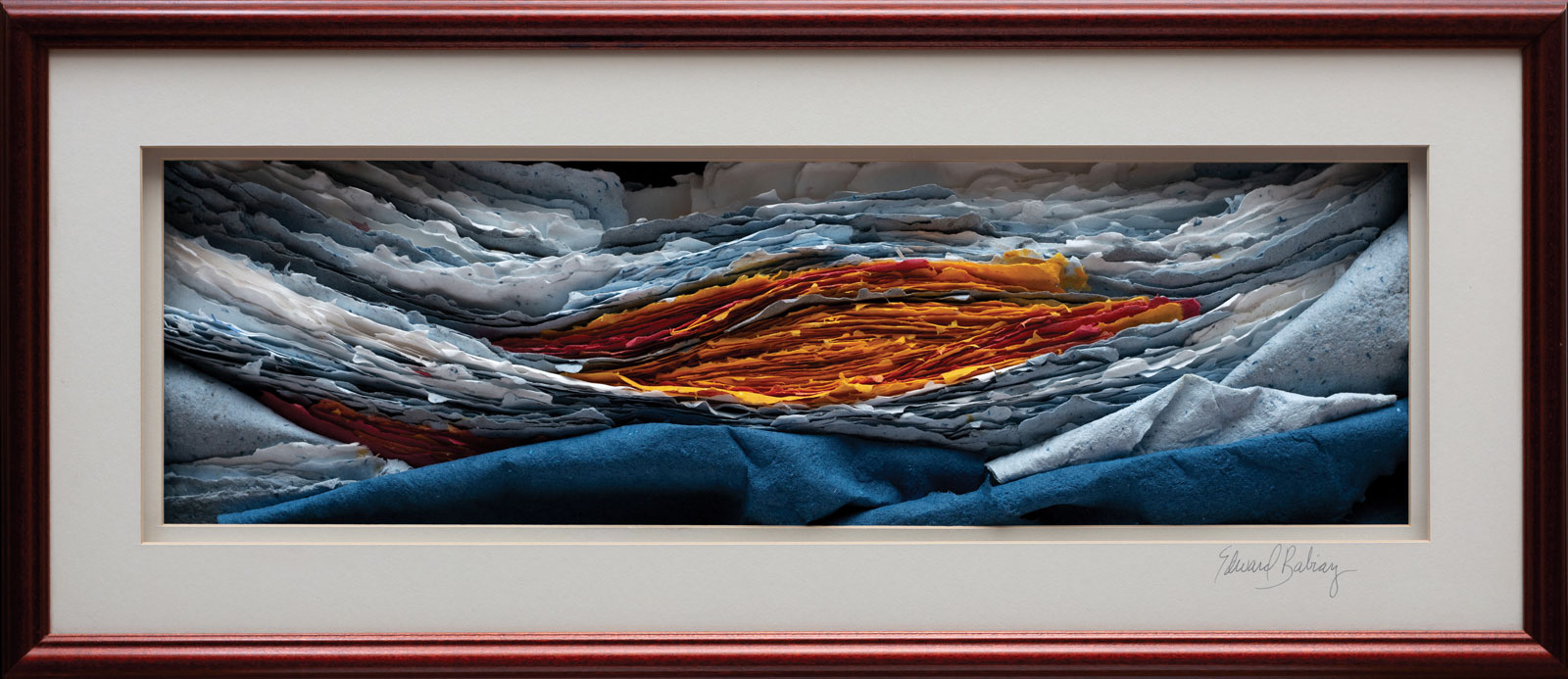
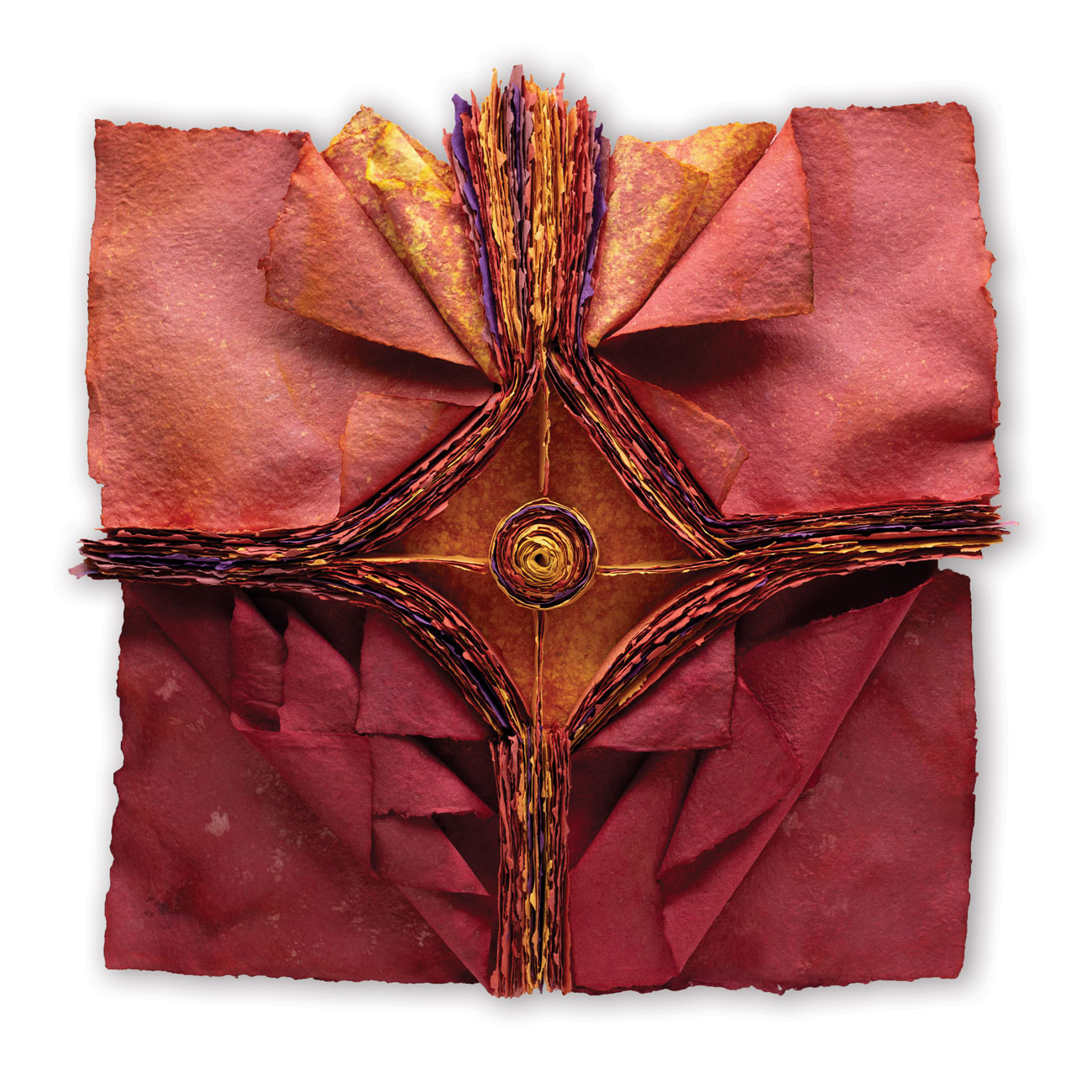
Wow!!!
Ed,
My husband Ted and I met you and Tim in New York City recently. We absolutely love this work!